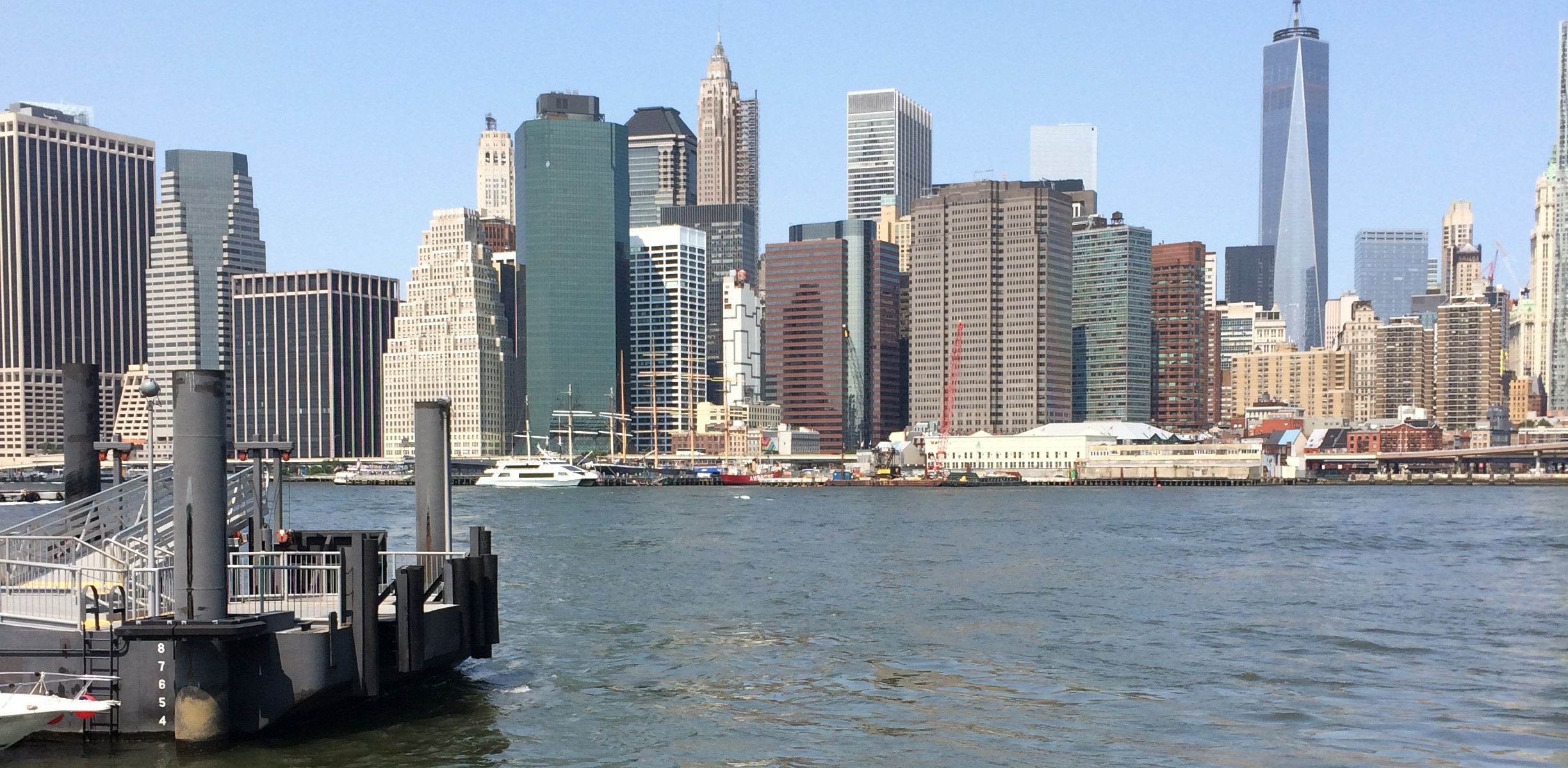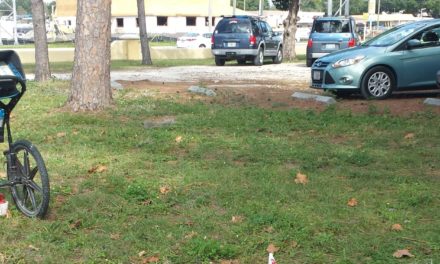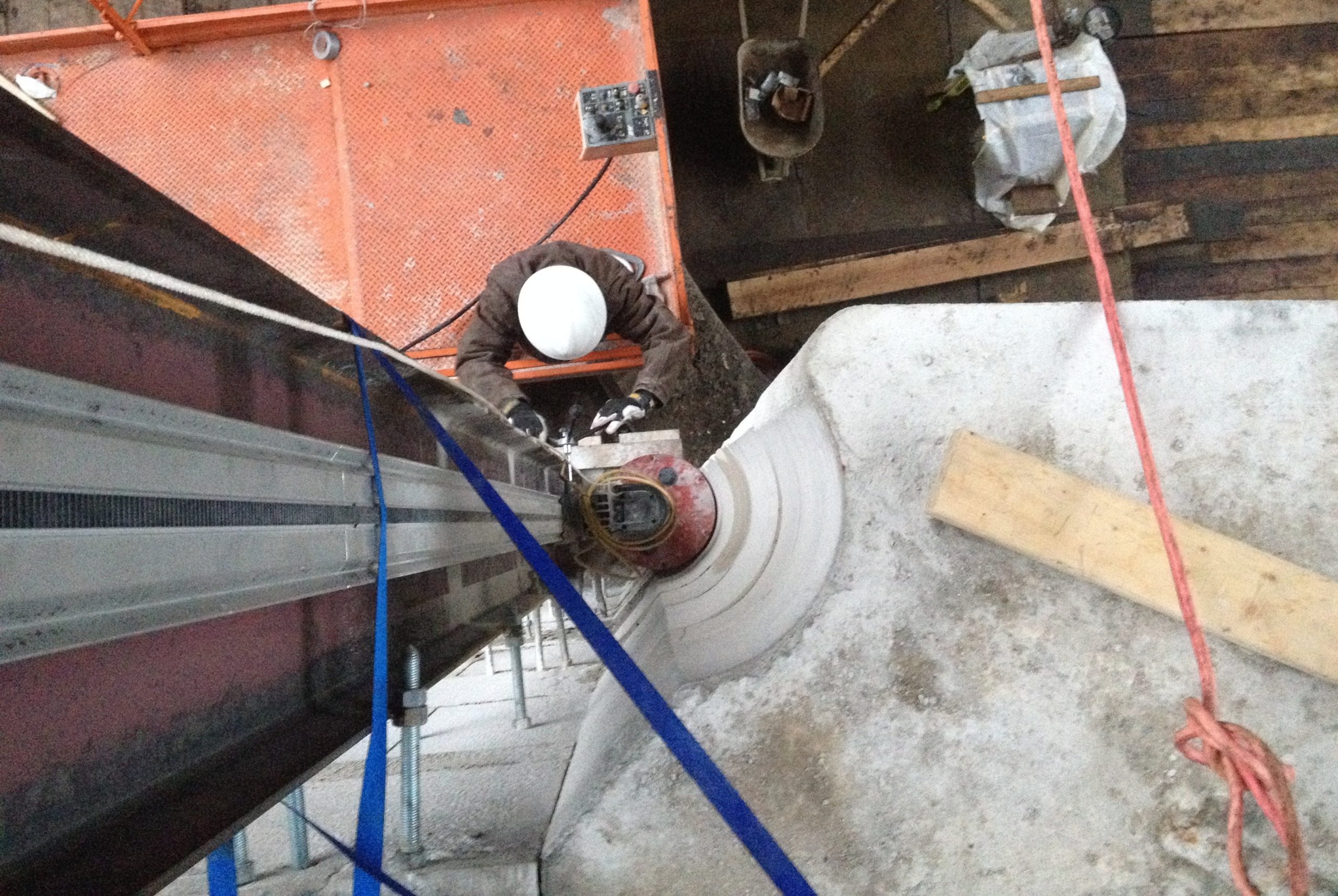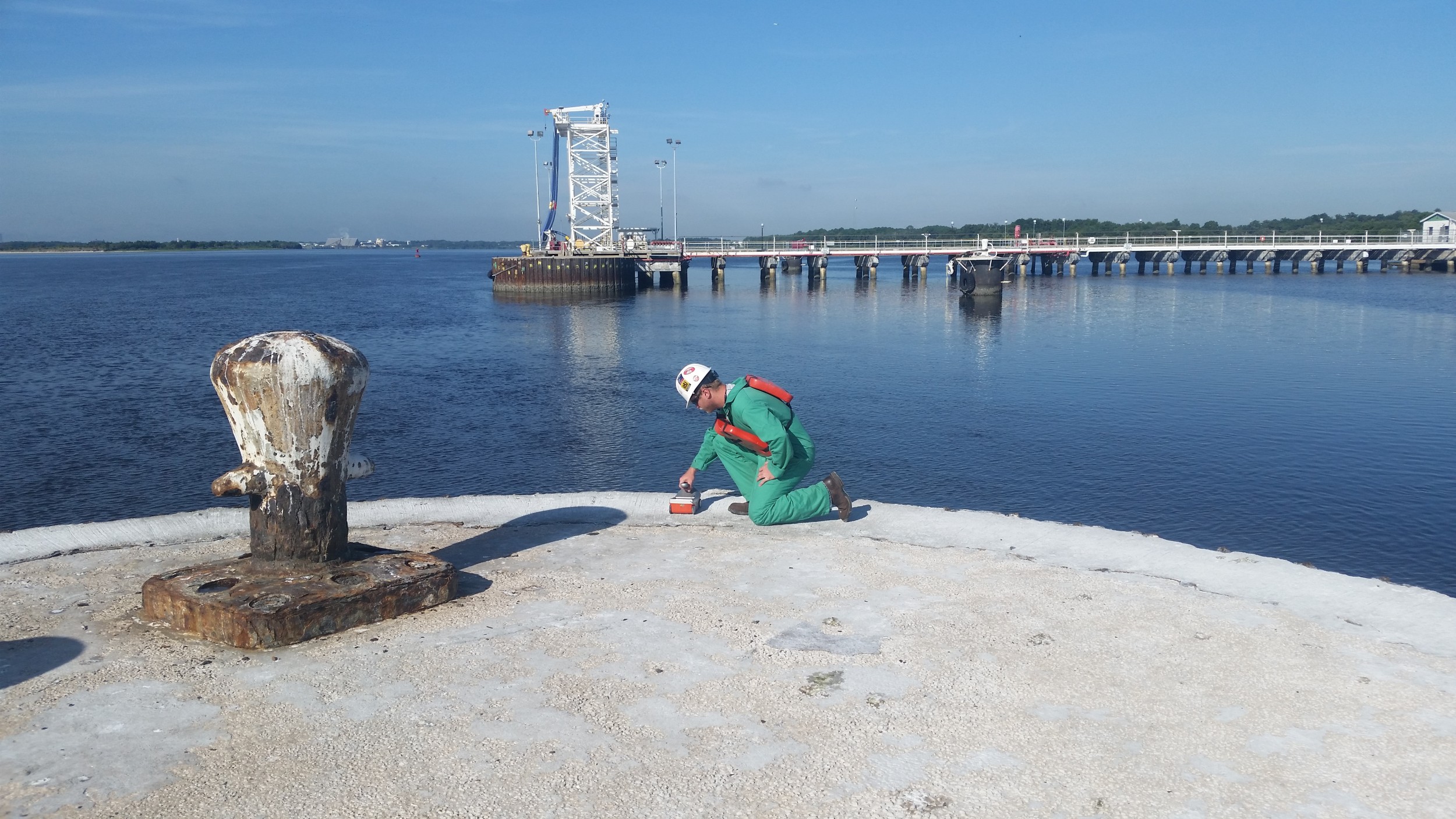
A Peer Inside the Pier
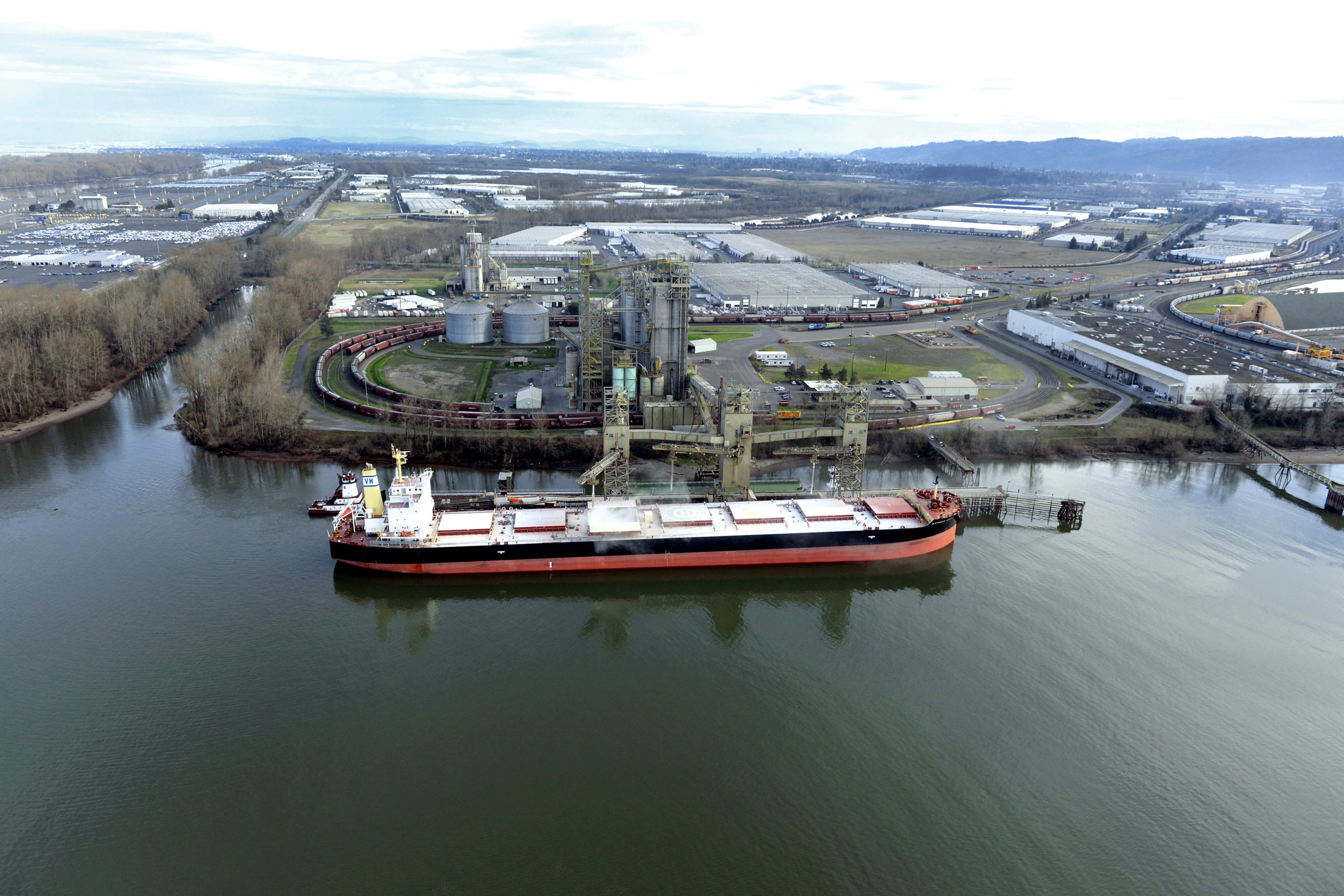
GPR Imaging Provides Structural Specifics at Port of Portland
On the banks of the Willamette River at a bustling port in Portland, Oregon, a Ground Penetrating Radar (GPR) analyst and a core drilling operator inspected a series of reinforced octagonal concrete piles and drilled cores for crucial structural integrity tests on an aging pier.
CSDA Member Penhall Technologies, based in Anaheim, California, was contacted by a large construction and engineering firm to inspect nine octagonal piles on a pier at Terminal 5 of the Port of Portland. The piles had been in place for over 40 years and testing was necessary to ensure the pier remained structurally sound. While it was known that the piles contained reinforcing steel rebar, their complete makeup was unknown as was the condition of the concrete below the surface. It was specified by the construction company’s project engineer that any reinforcing rebar or vertical pre-tensioned cables within the structures not be disturbed while core drilling, so a non-destructive method was needed to identify hidden objects.
“Gone are the days of crossing fingers in hopes that no subsurface hazards or embedments are struck. GPR scanning takes the guess work out and allows for project efficiency,” said Colby Bruni, Penhall Technologies’ GPR analyst for the job.

The GPR analyst scanned 2-foot-wide octagonal piles and marked the findings on the concrete.
Conditions were far from perfect for this type of inspection. The job was scheduled during the month of January when average daily temperatures in Portland are in the low 40’s. The GPR analyst and core drilling operator were out on the water performing their tasks from a floating work barge with no shelter from the elements. Despite the cold weather, the pair were equipped to get to the jobsite and perform the job successfully for the customer.
After the two-man crew arrived at Terminal 5 with all equipment needed to complete the task, they set out on a work barge to the first scan location. The floating barge had to be positioned 40 feet from the pier deck because the water around the pier was not sufficiently dredged, so a telescopic boom lift was employed to position the analyst and operator next to the piles.
The GPR analyst scanned each of the 2-foot-wide, 2-foot-thick octagonal concrete piles using a Mini HR GPR unit from CSDA member GSSI, Inc. Using a 2,600 megahertz antenna, this piece of equipment provided data that allowed the Penhall Technologies analyst to analyze and identify embedments and hidden objects within the concrete. The unit is designed for the subsurface location of rebar, conduits, post-tension cables and voids.
Imaging the piles was achieved by sending radar waves from the GPR unit through the concrete piles themselves. When the waves are sent through an area or structure, reflections are produced. This occurs when the wave itself enters into a material with different properties than that of the material it initially left. The series of waves over a specific area make up the scan image. From this image, and through observations of both structural surroundings and the structure itself, the analyst was able to determine the type of embedments encountered by the wave and at what depth the material was positioned in the concrete.
For this particular job, the Penhall GPR analyst used the Line Scan method to collect and analyze the data. A Line Scan is when data is collected by passing the radar antenna or antenna array over the concrete to image targets as a cross-sectional view. This method requires scanning and marking targets as they are revealed in each line of data. The scan face of the pile was 10 inches wide and the analyst scanned a 2-foot-tall section. Scan results indicated that there were two pre-tensioned cables and spiral rebar within each hollow pile. Objects located by the GPR equipment were presented on the display and subsequently marked on the concrete pile in colored lumber crayons.

A core drill operator created and removed 2-inch-diameter, 5-inch-long cores for integrity testing.
Based on the data collected by the GSSI unit and the interpretations of the GPR analyst, the Penhall Company core driller was directed to create a series of 2-inch-diamater cores 5 inches deep into the piles for integrity (crush) testing of the concrete. Using a Hilti core drill fitted with a 2-inch-diameter diamond bit, the operator took core samples from five piles with low levels of noise and debris. The cores were carefully removed and given to the engineering firm for testing.
“It is highly recommended to scan concrete before any core drilling or saw cutting to avoid unwanted hits of structural reinforcements or embedments. This is why the close collaboration between the GPR analyst and core driller took place, to ensure the safety of everyone involved on this project,” said Stella McAdams, sales and marketing manager for Penhall Technologies.
The Port of Portland
In 1891, the Oregon Legislature created the Port of Portland to dredge and maintain a shipping channel from the city of Portland to the Pacific Ocean. The Port owns four marine terminals, including Oregon’s only deep-draft container port, and three airports. It also manages five industrial parks around the metropolitan area that are home to more than 400 companies. The Port of Portland has created nearly 27,000 jobs in the Portland metro area and generated almost $1.8 billion in total income for the region, based on 2015 figures.
The Port’s terminals cover 892 acres, used to handle mineral bulks, motor vehicles, liquid bulks, food stuffs, manufacturing materials and shipping containers. In 2015, the Port handled approximately 8.5 million tons of cargo. It is the largest wheat export port in the U.S. and the largest mineral bulks port on the U.S. West Coast.
Company Profile
Penhall Company has been a CSDA member since 1999 and is based in Anaheim, California with support locations across the U.S. The company’s Technologies division was established in 2016 specifically for GPR imaging and utility detection services. Penhall Technologies currently has 50 analysts and services all 50 states.
Resources
GPR Imaging and Core Drilling Contractor:
Penhall Technologies/Penhall Company
Anaheim, California
Phone: 949-238-2010 x5547
Email: smcadams@penhall.com
Website: www.penhall.com/concrete-scanning
Methods Used: GPR Imaging, Core Drilling











